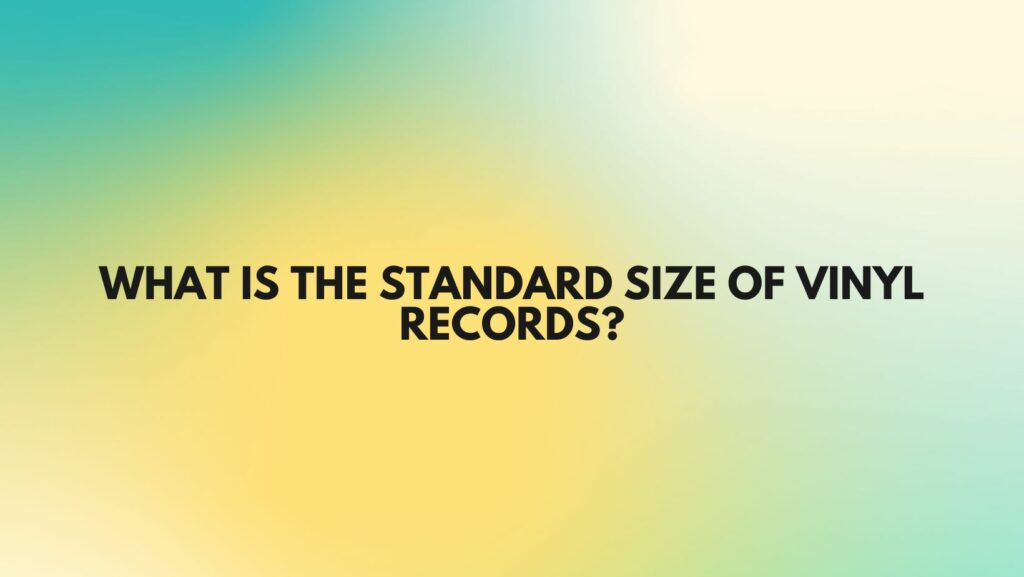Vinyl Records: A Journey Through Sizes and Sounds
Vinyl records, with their distinctive grooves and warm, analog sound, have captivated music lovers for decades. While modern technology has introduced a variety of digital audio formats, vinyl remains a popular choice for those seeking a more authentic and immersive listening experience. Among the many aspects of vinyl that contribute to its enduring appeal is the diversity of record sizes, each offering a unique sonic experience.
The Standard Size: 12-Inch Vinyl Records
The most common and widely used vinyl record size is 12 inches in diameter. These records, also known as LPs (long-playing records), typically spin at 33⅓ revolutions per minute (RPM) and can accommodate up to 22 minutes of music per side. This ample capacity makes them ideal for full-length albums, allowing artists to create expansive musical journeys and showcase their creativity without limitations.
The 12-inch size also provides a larger surface area for the intricate groove patterns that encode the music. This, in turn, contributes to the rich, detailed sound characteristic of vinyl, allowing for a more nuanced and faithful representation of the original audio recording.
7-Inch Vinyl Records: Singles and Shorter Gems
Smaller in stature but equally captivating are 7-inch vinyl records, commonly known as “singles.” These records typically spin at 45 RPM and contain one or two tracks per side. Their compact size and shorter playing time make them ideal for showcasing individual songs or capturing the energy of a particular moment in time.
7-inch records were particularly popular in the era of rock and roll, their faster rotation and shorter duration complementing the upbeat, energetic style of the music. They continue to be used today for releasing singles, demo recordings, and special editions of popular songs.
10-Inch Vinyl Records: A Bridge Between Sizes
Bridging the gap between the larger 12-inch and smaller 7-inch records are 10-inch vinyl records. These records typically spin at 78 RPM and offer a balance between playing time and sonic fidelity. They were more common in the early days of vinyl but have gradually declined in popularity.
Despite their reduced presence, 10-inch records remain a valuable part of vinyl history, offering a unique listening experience that blends the extended capacity of 12-inch records with the faster rotation of 7-inch singles. They are often sought after by collectors and enthusiasts of vintage music.
Conclusion: A World of Vinyl Possibilities
The diverse range of vinyl record sizes provides music lovers with a variety of options to suit their listening preferences and musical tastes. Each size offers a unique sonic experience, from the expansive soundscapes of 12-inch LPs to the energetic bursts of 7-inch singles. As you explore the world of vinyl, embrace the different sizes and discover the distinct characteristics that each brings to the listening experience.


